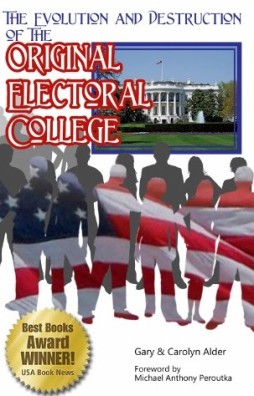Article I Section 1
Bicameral Congress
All legislative powers herein granted shall be vested in a Congress of the United States, which shall consist of a Senate and House of Representatives.
* * * * * * *
Analysis
Congress
Noah Webster in his 1828 dictionary begins by showing that the Latin origin of the word congress comes from the verb that means to come together. (for his exact words press the “def” button by the word congress.) He then lists various meanings of the word, four of which we will summarize below:
Definition 1, the general definition, describes an assembly of envoys from participating nations to discuss their mutual concerns. Definition 2 refers to the assembly of delegates of the several British Colonies in America which declared the colonies independent. Definition 3 relates to the assembly of the delegates of the several United States, after the declaration of Independence, and until the adoption of the Constitution. Definition 4 has reference to the assembly of senators and representatives of the several states of North America, according to the Constitution. In this definition Webster describes the union of the States as a federal republic. Other terms for federal republic are federation and confederation. A federal government is the government of a federation and it is under control of a congress.
Vesting All Legislative Powers
As shown in Noah Webster’s 1828 Dictionary, vesting all legislative powers granted by the Constitution in Congress meant that those powers were not contingent or temporary but were permanently the exclusive prerogative of Congress only. No contingency or authorization was given to the executive or judicial branch to preempt this legislative power. By the same token the legislative powers granted by the Constitution do not include legislative prerogatives that are not the purview of the Federal Government.
Why a Bicameral Congress?
Section 1 declares that the Congress of the United States, would consist of two houses, a Senate and a House of Representatives. This was a very significant innovation. The previous congress under the Articles of Confederation had only one legislative house. The Federation would now represent two constituencies, each representing separate and sometimes conflicting interests (See Key # ). To be more specific, the Senate would continue to represent the interest of the State governments as was the case under the Articles of Confederation and now the House of Representatives would represent the interest of the people of each State. Thus the government under the Constitution, while remaining a federal republic (confederation of states), is transformed from a simple federation where each state had one vote to a complex republic with a vote weighted by population for one house and an equal vote per State in the other(See Key # ). In short Article I Section 1 establishes a modified federal republic.
Actually, the Virginia Plan, which formed the basis for the debate and discussion in the Constitutional Convention, did not call for a Senate with equal repesentation for each State, but rather proportional representation by population but this was rejected by the small states and a compromise was reached that retained the federal nature of the Senate and the sovereignty of the States.
What Protections are Offered by a Bicameral Congress?
When a separate interest is reflected by each House of Congress, and a majority is required in both Houses to pass laws, each interest effectively has an absolute check on the other. In other words, both interests must concur before a law can be passed. In order to represent an interest the representative is chosen (elected or appointed) by, and therefore may be replaced by, those same constituents. Laws that would force the will of the highly populated States on the less populated States would not pass. By the same token a group of small states could not force their will on the high population States.
What Happened to the Original Bicameral Design of Congress?
The original Constitution was designed to accommodate the will of a majority of States in the Senate and the will of the majority of people in the House of Representatives. When both of these majorities would concur, the law was considered a good one and would pass. The Constitution was not designed for political parties, although it did not forbid them. As political parties formed and were able to muscle their way into the de facto structure of government, both the Senators and the Congressmen became pawns of the Party that elected them and each House was controlled by the Political Party that had a majority in that House. The two Houses of Congress no longer checked each other by representing separate interests. The modified federation became a modified democracy. The 17th Amendment solidified the usurpation by making the people the constituents (electors or voters) to choose the Senators (under party control).


